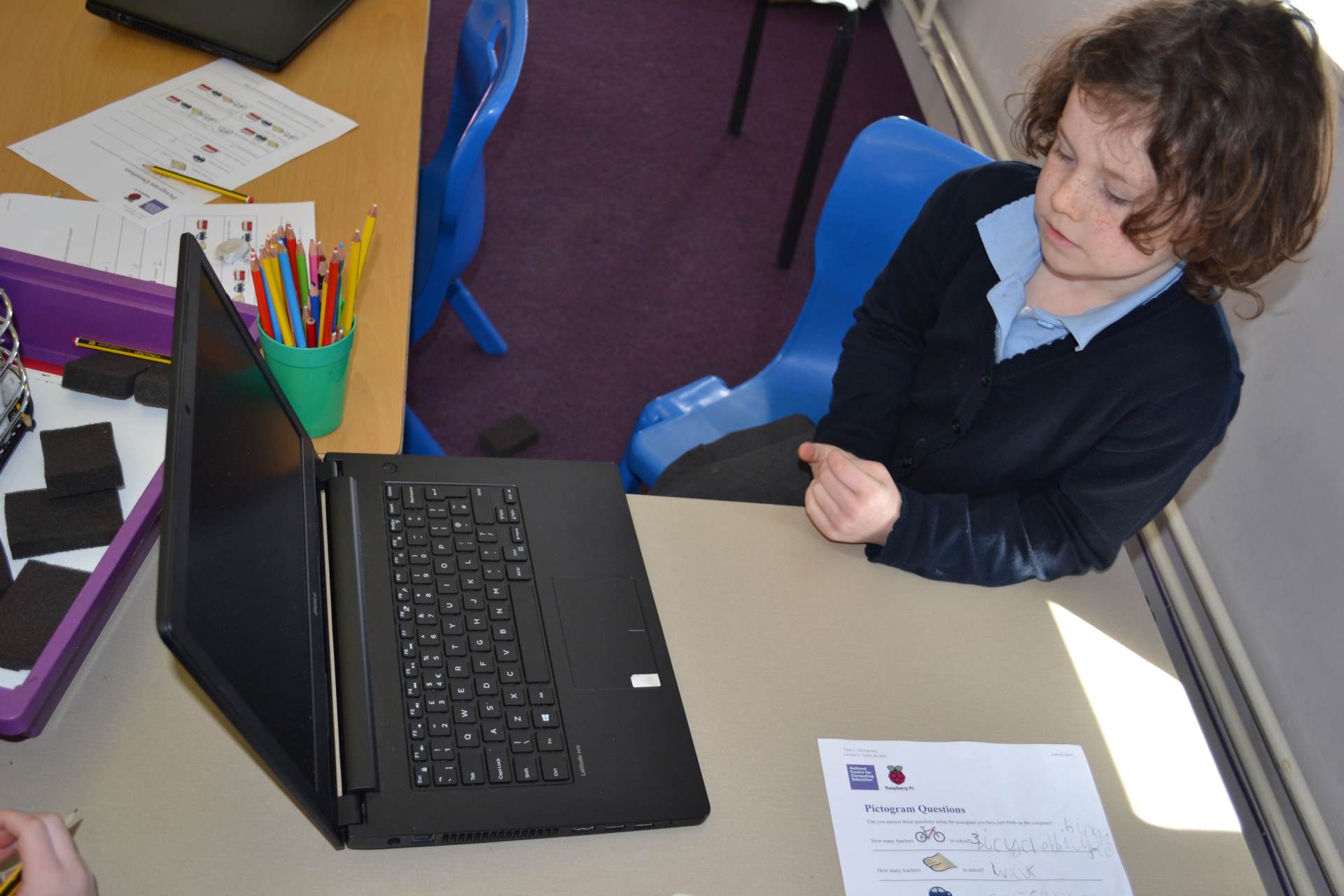Computing
At Badsey, our computing curriculum is designed to progressively build children's skills in key areas of technology, including computational thinking, computer science concepts, and digital literacy. We aim to equip students with the ability to use technology practically and effectively across a range of contexts. By revisiting core skills regularly, children continuously refine their abilities. They engage with technology to create digital content and communicate their ideas, while also gaining hands-on experience in problem-solving through computer programming. Students learn to use various software tools and coding platforms, developing computational skills such as logic, algorithms, and data representation.
Our school provides access to a diverse range of devices, including laptops, iPads, Bee-Bots, and Pro Bots, to enhance learning. Recognizing the central role of technology in modern society, we emphasize the importance of becoming safe and responsible digital citizens. At Badsey, we are dedicated to teaching students how to use technology in a secure and respectful way, ensuring they are well-prepared to become confident, independent, and ethical users of digital tools. This approach fosters not only technical skills but also a sense of responsibility and awareness in the digital world.
National Curriculum for Computing in England
Computing and ICT are curriculum areas which have come such a long way over the last decade. Computer literacy is such an important present-day skill and at Badsey we are delighted to offer a curriculum which ensures all children are given the opportunities to be computer literate by the time they transition to Middle School. Whilst computing itself isn't a specific focus of the Early Years Framework, technology and problem solving are fundamental elements. From these earliest beginnings, Badsey pupils go on to enjoy lessons on programming, coding, creating media, understanding networks & the internet and much, much more throughout their KS1 and KS2 journeys.
Discover more about our Computing Curriculum at Badsey from the document below:



ESafety at Badsey
An important thread of ESafety runs through all learning linked with technology and being online. Children at Badsey use the Internet on a regular basis as part of their learning. Technology enhances learning, and we at Badsey want to ensure pupils get the most from it, by encouraging behaviour online which falls in sync with our Badsey Value of Be Responsible.
In school, we use a filtering system to prevent children accessing inappropriate sites. We also have regular ESafety assemblies and lesson-starters to remind children of the importance of keeping themselves safe online. The Super CAT (Check Ask Tell) approach used across all GLA schools is well embedded at Badsey, where children are taught what actions they can take to keep themselves safe online.
We have a further page on our website dedicated to ESafety:Visit our e-safety page
Computing in the Early Years
Whilst 'Technology' has been removed as a specific strand from the 'Understanding the World' element of the Early Years Framework from 2021-22, it is still an important area of learning for children at Badsey. Learning around technology is woven into Continuous Provision and is centered around play-based activities which develop each child's listening skills, curiosity, creativity and problem solving. For example, we will provide children with the opportunity to take photos, search on the internet, play games with the interactive whiteboard, listen to music and watch video clips. Allowing children the opportunity to explore technology in this child-led way, means that not only will they develop a familiarity with equipment and vocabulary but they will have a strong start in Key Stage 1 Computing and all that it demands.
Computing in Key Stage 1 (Years 1 and 2)
Prior to learning anything else in our Computing curriculum, we ensure a solid grounding for all children in Year 1 in the importance of staying safe online. This is tackled in an age-appropriate way. We have mapped out a careful progression of learning across Key Stage 1 so that children are given the opportunity to learn something new and then revisit it to reinforce that learning. For example, in the Spring term of Year 1, children will learn about technology around us and how computing systems and networks support so much of the technology we use. This will be revisited in the Autumn of Year 2 to help children embed their understanding. Practically, there are lots of opportunities for the children to get hands-on with the ICT equipment - ranging from Creating Media units on digital painting (Y1) and making music (Y2) to Programming units looking at moving robots (Y1) and robot algorithms (Y2). Children at the end of Key Stage 1 confidently move into the next chapter of their education with a strong and practical understanding of the National Curriculum for computing.
Computing in Key Stage 2 (Years 3, 4 and 5)
In Years 3, 4 and 5 the curriculum continues to revisit and reinforce learning from prior year groups - with units, for example, on Creating Media now looking at Photo Editing in Years 4 and 5. There is also the introduction of some new units of work which pull on learning from other areas of the National Curriculum, like Science and Maths. Children in Year 3 develop their understanding of sequencing through music programming as well as building their own databases. The technology itself moves on - in school we offer our younger children the chance to programme BeeBots and by the time they reach Year 5 we offer an advancement on this with ProBots.






